Abstract
The biosynthesis of cholesteryl glucoside by Mycoplasma gallinarum strain J proceeds by the transfer of glucose from uridine-5′-diphosphoglucose to membrane-bound sterol. Galactose also can be coupled to cholesterol via uridine-5′-diphosphogalactose. The reaction is specific for the uridine-5′-diphospho sugars. Enzymatic activity is associated with the membrane. Treatment of the membrane to remove endogenous sterol inactivates the enzyme. Only sterol which has been bound to the membrane participates in the reaction. The optimum pH is about 8.0, and Mg2+ is required. The reaction is unaffected by nucleotide triphosphate, uridine-5′-monophosphate, and uridine-5′-diphosphate. Reduction of pH to the optimum for β-glucosidase in the membrane results in loss of synthesized glucoside. The enzyme is saturated at 0.5 mm uridine-5′-diphosphoglucose. The apparent Km of 2.05 × 10−7 indicates a high affinity of the enzyme for the nucleotide sugar.
Full text
PDF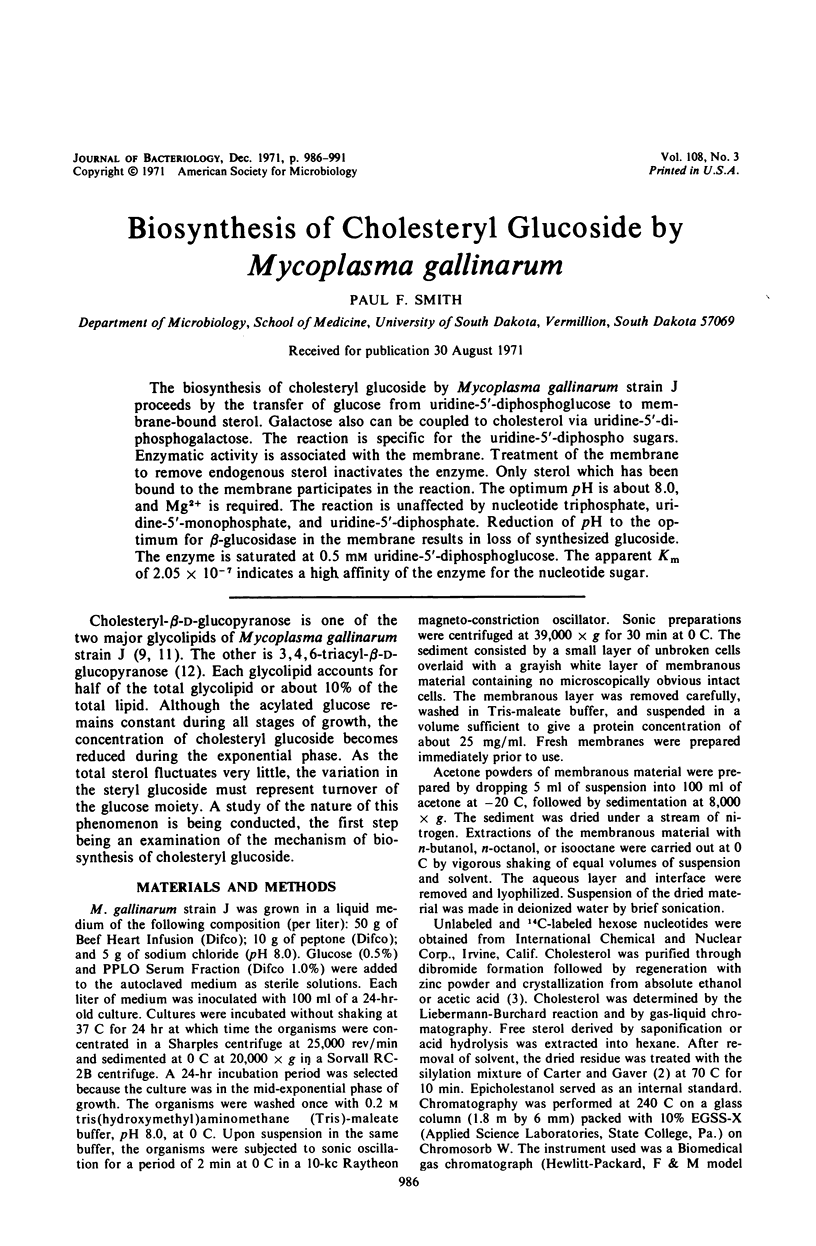
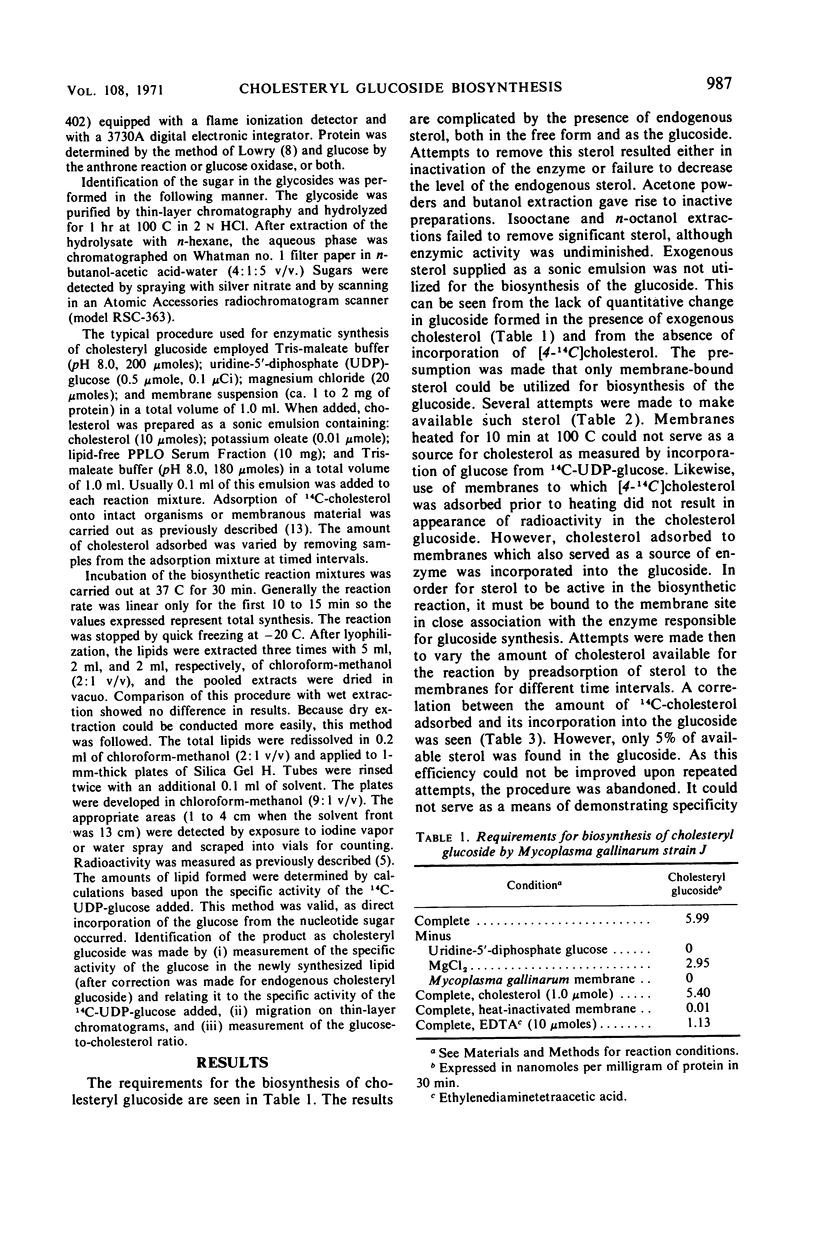
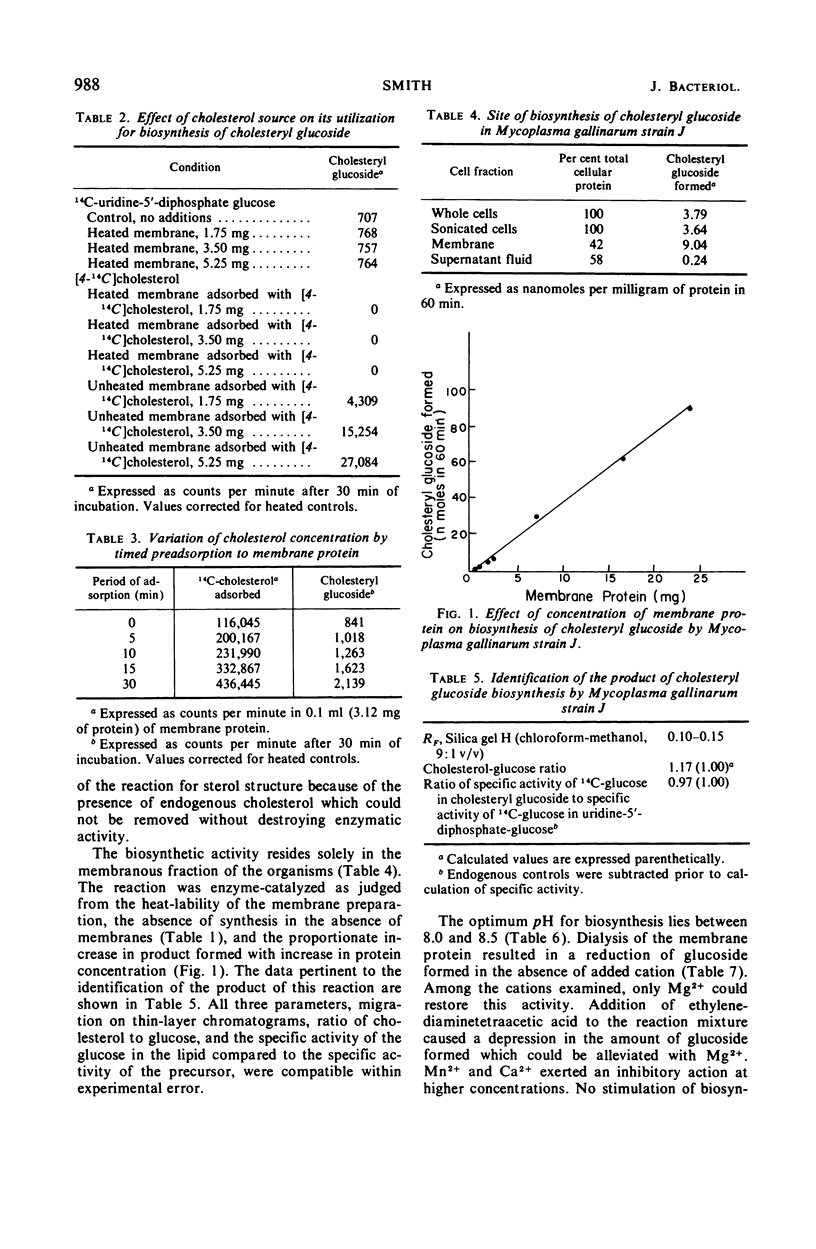
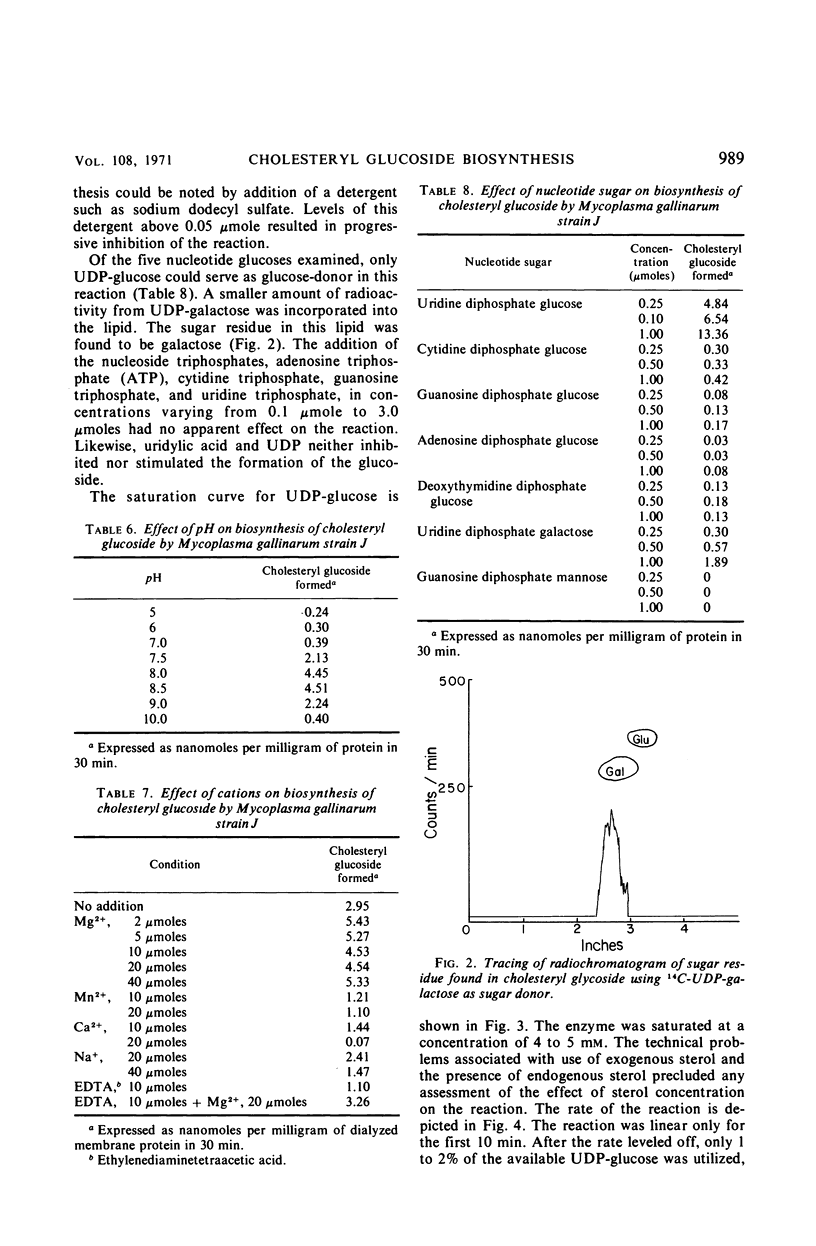
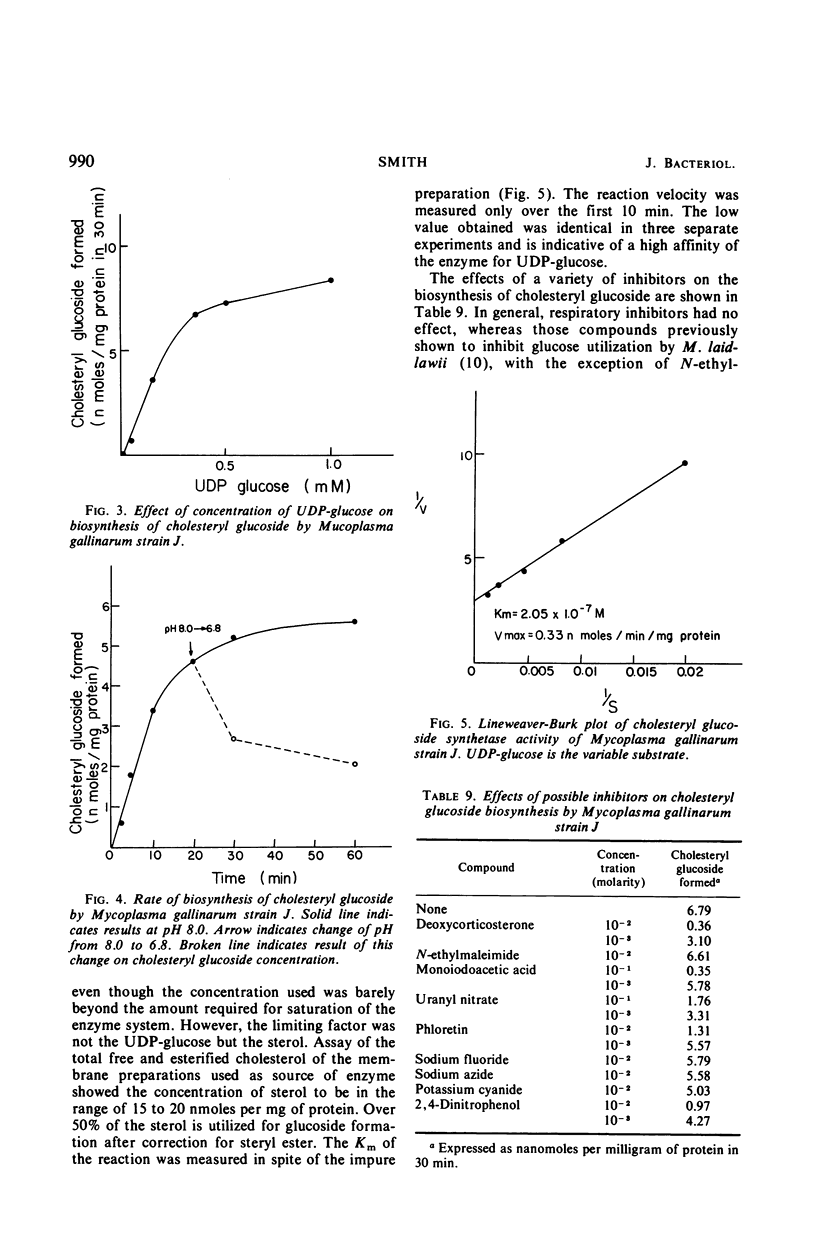
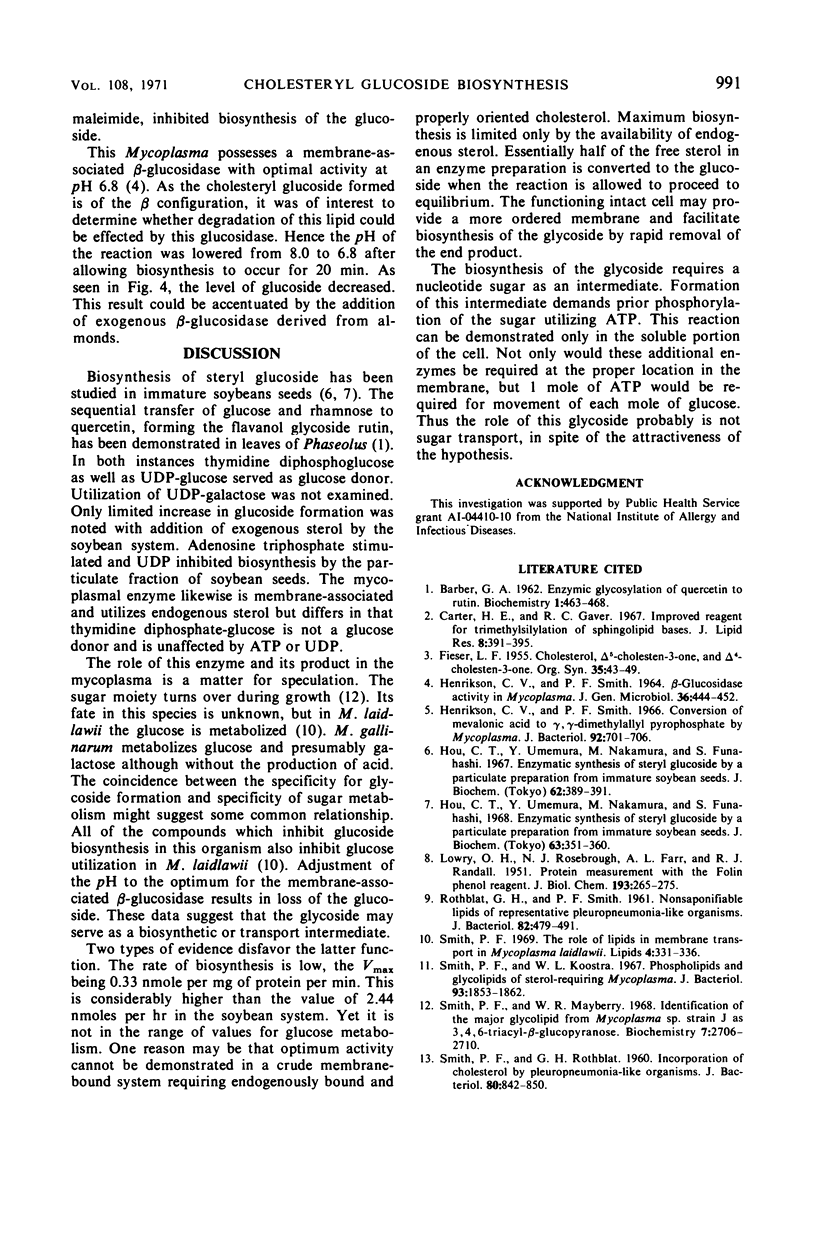
Selected References
These references are in PubMed. This may not be the complete list of references from this article.
- BARBER G. A. Enzymic glycosylation of quercetin to rutin. Biochemistry. 1962 May 25;1:463–468. doi: 10.1021/bi00909a015. [DOI] [PubMed] [Google Scholar]
- Carter H. E., Gaver R. C. Improved reagent for trimethylsilylation of sphingolipid bases. J Lipid Res. 1967 Jul;8(4):391–395. [PubMed] [Google Scholar]
- Henrikson C. V., Smith P. F. Conversion of mevalonic acid to gamma, gamma-dimethylallyl pyrophosphate by Mycoplasma. J Bacteriol. 1966 Sep;92(3):701–706. doi: 10.1128/jb.92.3.701-706.1966. [DOI] [PMC free article] [PubMed] [Google Scholar]
- Hou C. T., Umemura Y., Nakamura M., Funahashi S. Enzymatic synthesis of steryl glucoside by a particulate preparation from immature soybean seeds. J Biochem. 1967 Sep;62(3):389–391. [PubMed] [Google Scholar]
- Hou C. T., Umemura Y., Nakamura M., Funahashi S. Enzymatic synthesis of steryl glucoside by a particulate preparation from immature soybean seeds. J Biochem. 1968 Mar;63(3):351–360. [PubMed] [Google Scholar]
- LOWRY O. H., ROSEBROUGH N. J., FARR A. L., RANDALL R. J. Protein measurement with the Folin phenol reagent. J Biol Chem. 1951 Nov;193(1):265–275. [PubMed] [Google Scholar]
- ROTHBLAT G. H., SMITH P. F. Nonsaponifiable lipids of representative pleuropneumonia-like organisms. J Bacteriol. 1961 Oct;82:479–491. doi: 10.1128/jb.82.4.479-491.1961. [DOI] [PMC free article] [PubMed] [Google Scholar]
- Smith P. F., Koostra W. L. Phospholipids and glycolipids of sterol-requiring Mycoplasma. J Bacteriol. 1967 Jun;93(6):1853–1862. doi: 10.1128/jb.93.6.1853-1862.1967. [DOI] [PMC free article] [PubMed] [Google Scholar]
- Smith P. F., Mayberry W. R. Identification of the major glycolipid from Mycoplasma sp., strain J as 3,4,6-triacyl-beta-Glucopyranose. Biochemistry. 1968 Aug;7(8):2706–2710. doi: 10.1021/bi00848a002. [DOI] [PubMed] [Google Scholar]
- Smith P. F., Rothblat G. H. INCORPORATION OF CHOLESTEROL BY PLEUROPNEUMONIA-LIKE ORGANISMS. J Bacteriol. 1960 Dec;80(6):842–850. doi: 10.1128/jb.80.6.842-850.1960. [DOI] [PMC free article] [PubMed] [Google Scholar]
- Smith P. F. The role of lipids in membrane transport in Mycoplasma laidlawii. Lipids. 1969 Sep;4(5):331–336. doi: 10.1007/BF02531002. [DOI] [PubMed] [Google Scholar]


